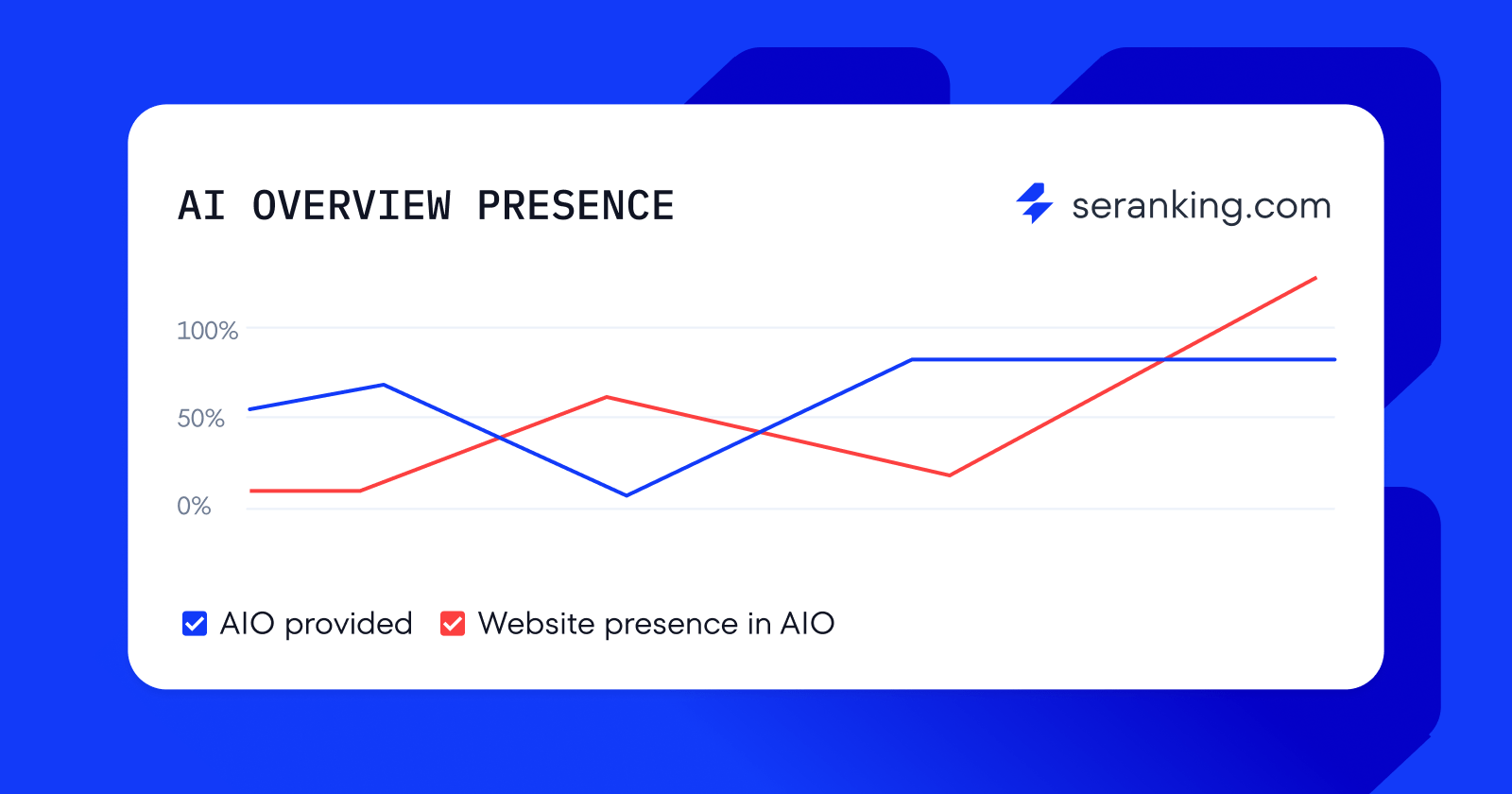SE Ranking sponsored this post. The opinions expressed in this article are the sponsor’s own.
Wondering how AI is affecting your traffic?
Want to learn how to get into the AI Overview at the top of SERPs?
Miss the days when you could appear as the top result on a SERP?
It’s possible to relive those SEO glory days by learning how tuned in your website is to AI.
What Is An AIO In SEO?
AI Overviews, or AIOs, are one of Google’s newest search features to grace the SERPs.
AI Overviews provide users with AI-generated answers and topic summaries, and they are gaining momentum. Google launched it as an experiment in May 2023, and since then changed the traditional search to kick off a new era of SEO.
Now the focus for SEO is on optimizing websites for AI Overviews.
According to SE Ranking’s studies, this feature is often observed for longer, mainly informational queries. These queries are common in niches like Relationships, Food and Beverage, Business, and more. While AI Overviews were initially only available in the US, they have recently expanded to six countries, where they can now hold top positions in search results.
No doubt, this is only the beginning of the rise of AI Overviews. To stay ahead in SEO, start tracking the impact of AIOs on your sites now. Let’s look at how to do this quickly and easily!
Step 1. Find Out Which Target Keywords Trigger AIOs
Begin by finding out which of your keywords trigger AIOs and which ones you can optimize your content for.
This will help you attract more traffic through the new search.
Doing this manually can take a long time, especially if you have a large project with thousands of keywords.
To automate this process, use SE Ranking’s Competitive Research tool. This tool contains 22 million AIO-triggering keywords in the US region and 2.2 million in the UK region.
- Go to the Organic Traffic Research section.
- Filter keywords by the AI Overviews feature, as shown in the screenshot below.
- The table will now only display keywords that trigger AIOs.
- Export the entire list.

Pro tip:
Explore the intent, search volume, position, and difficulty of all keywords triggering AIOs. This will help you prioritize content optimization for AIOs. For example, if a keyword is likely to bring in very little traffic, don’t focus too much on monitoring and optimizing content around it.
Step 2. Add Keywords To An AI Tracker To Monitor Them
The next step is to streamline how you monitor your presence in AIOs. Keeping track of every keyword manually is difficult and time-consuming, so having an automated tool is a must.
We suggest using the handy AI Tracker because it lets you add and monitor up to 1,500 keywords.
The AI Tracker is available to all users during the 14-day trial of SE Ranking. Access this tool and our complete SEO suite to outperform competitors and boost traffic.
To get started:
- Create a project in SE Ranking.
- Add all the keywords exported during the previous step.
- Head to the AI Tracker tool.
- Click Select keywords.
- Choose the ones to track for AI Overviews.
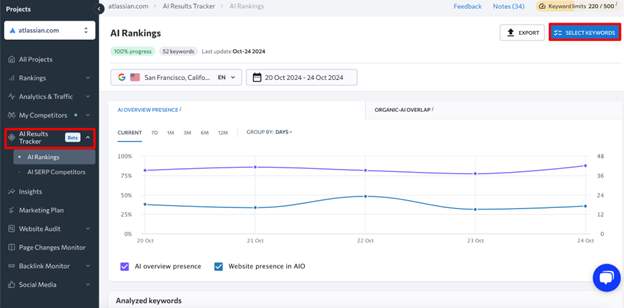
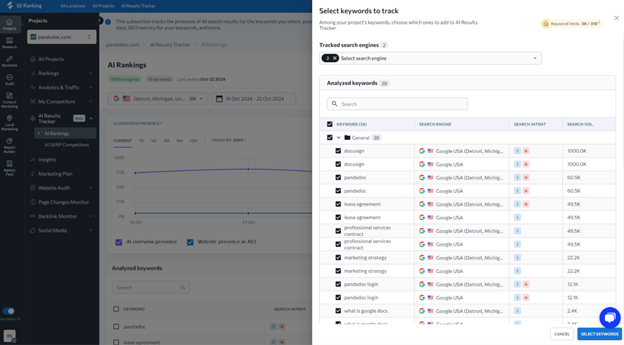
Once you’ve added the keywords, the tool will check their positions in AIOs daily. This makes it easy to monitor changes in AI results and your presence in them.
Step 3. Check Your Site’s Visibility On AIOs
Of course, many SEO specialists are concerned most about whether their site is included in the AI Overviews source list.
Consider using the AI Overview Presence graph in SE Ranking’s AI Tracker to understand the situation clearly and see how visible your site is in AIOs. This tool shows how many of your added keywords triggered AIOs and how many AIOs feature your site in Google’s list of resources.
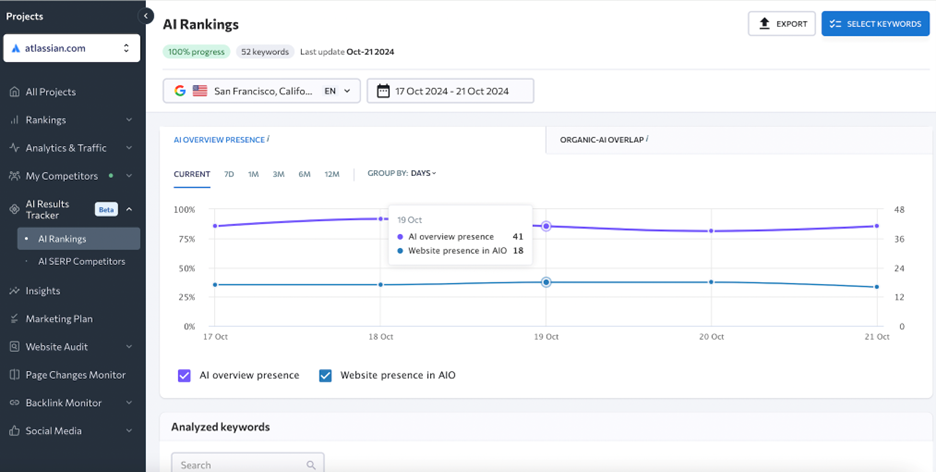
Look at the table below to see which keywords triggered AIOs and which didn’t. If the icon has a gray strike-through, there are no AIOs for that keyword. If the icon is gray, there are AIOs present, but your site is not included. If the icon is purple, your site is featured in AIOs.
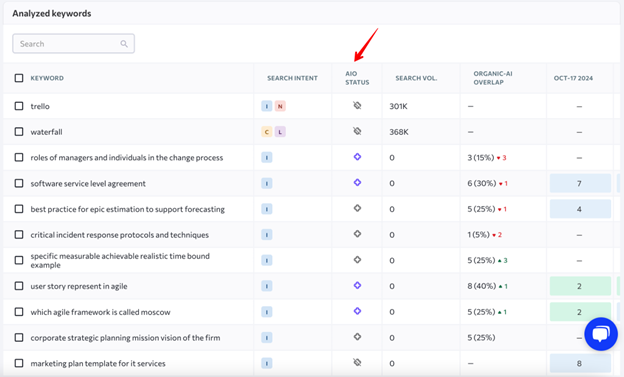
What do these numbers mean? If there are 100 AIOs but your site appears in only 10 of them, you’re likely losing traffic. When AIOs appear in search results, users often won’t scroll past them to find your site. This still holds even if it ranks first in regular results. Recent research from SE Ranking confirms this, stating that featured snippets show up alongside AI Overviews 45.39% of the time, while ads appear with AI Overviews a staggering 87% of the time.
This data helps you identify which keywords to focus on. You can then track how your new AIO strategy performs over time. If you take steps to get into AI snippets, each graph will show a rising curve.
But remember: AI Overviews are constantly shifting. AIOs might appear one day for a query and then disappear the next. You might even see your site in an AI snippet at the top one day only for it to disappear completely the next. Moreover, Google is constantly changing the appearance of its AI snippets.
When it was first released, the snippet looked like this:
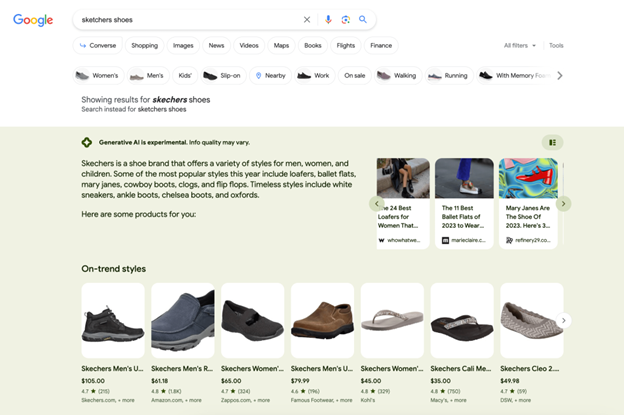
Now, it looks like this:
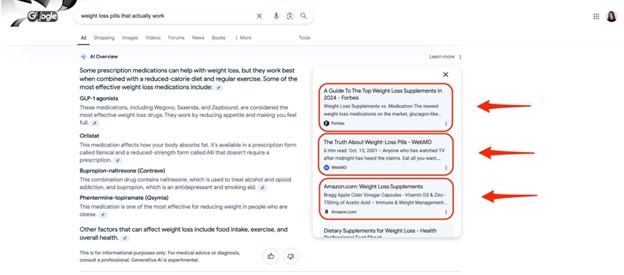
There are currently fewer links, with Google shifting them to the right to give them less importance. This ensures they don’t distract users from the main AI-generated information. It’s important to keep an eye on AIOs in case other changes occur. You’ll need to understand what to expect and whether you’ll still be visible in AIOs, even if you’re included in them.
In these cases, the tool stores cached copies of every SERP it crawls. This allows you to see how the appearance of AIOs has changed over time. You can easily check if your website links were prominently displayed in the AIOs or if they were hidden behind a button.
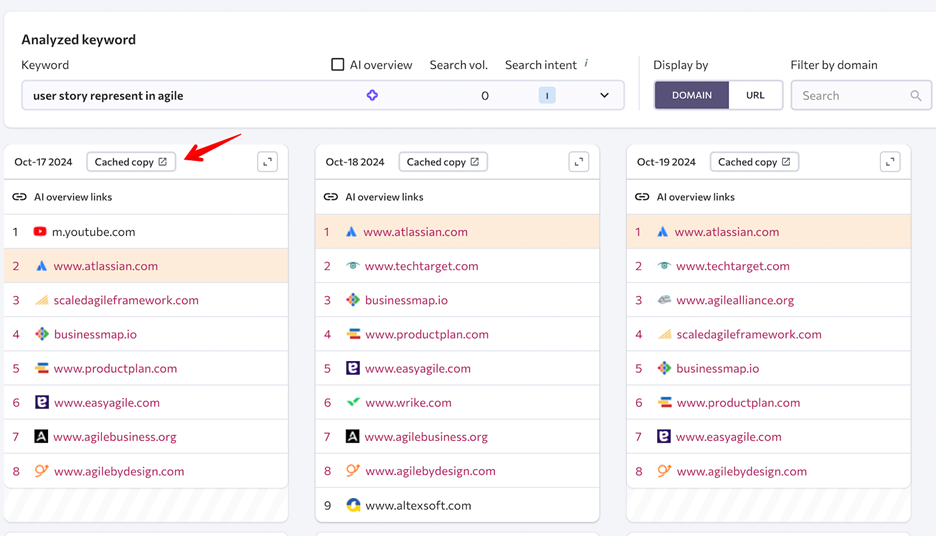

Step 4. Learn Which Sites Are Chosen Over Yours As AIO Sources
Another important step is to monitor the sites that appear in AIOs where your site is missing. Why is this useful? It helps you identify gaps in your content and allows you to optimize it. This increases its chance of being included in AIOs.
You can use the Organic-AI Overlap graph to check how many sites from the top 20 are currently featured in AIOs for your keywords.
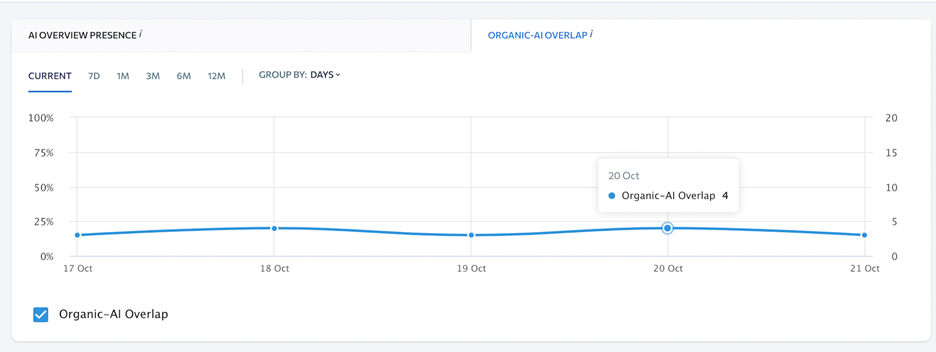
Use the AI SERP Competitors section to fully analyze this data. It will show you:
- Which sites are included in the AI snippet
- How the top 20 results for that keyword look
If you notice that the AI snippet includes many sites outside the top 20, focus on what these sites are doing to be cited by Google. Conversely, if Google favors the top 20 sites for certain keywords, continue optimizing your site. It may eventually reach the top and greatly increase your chances of being featured in AIOs.
AIOs may also disappear, so aiming for top rankings is always a winning strategy.
Track Your AI Overview Efforts With SE Ranking
The entire digital world is entering a new era of AI-driven search. What we are seeing now is just the beginning. While the future is a mystery and holds more changes, one thing is certain: AI is here to stay, and we must adapt to work with it.
Monitoring AIOs is an essential part of this new strategy. Setting up this process correctly will undoubtedly give you results.
Try SE Ranking’s AI Tracker for free for 14 days with a trial subscription to give your SEO strategy the boost it needs!
This article has been sponsored by SE Ranking, and the views presented herein represent the sponsor’s perspective.
Ready to start optimizing your website? Sign up for SE Ranking and get the data you need to deliver great user experiences.
Image Credits
Featured Image: Image by SE Ranking. Used with permission.
